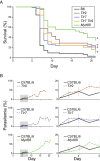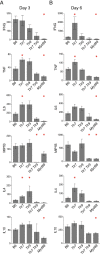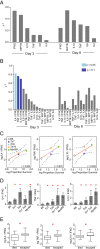Loss of Toll-like receptor 7 alters cytokine production and protects against experimental cerebral malaria
- PMID: 25192715
- PMCID: PMC4164820
- DOI: 10.1186/1475-2875-13-354
Loss of Toll-like receptor 7 alters cytokine production and protects against experimental cerebral malaria
Abstract
Background: Malaria, caused by Plasmodium sp. parasites, is a leading cause of global morbidity and mortality. Cerebral malaria, characterized by neurological symptoms, is a life-threatening complication of malaria affecting over 500,000 young children in Africa every year. Because of the prevalence and severity of cerebral malaria, a better understanding of the underlying molecular mechanisms of its pathology is desirable and could inform future development of therapeutics. This study sought to clarify the role of Toll-like receptors (TLRs) in promoting immunopathology associated with cerebral malaria, with a particular focus on the understudied TLR7.
Methods: Using the Plasmodium berghei ANKA mouse model of experimental cerebral malaria, C57BL/6 mice deficient in various TLRs were infected, and their resistance to cerebral malaria and immune activation through cytokine production were measured.
Results: Loss of TLR7 conferred partial protection against fatal experimental cerebral malaria. Additionally, loss of TLR signalling dysregulated the cytokine profile, resulting in a shift in the cytokine balance towards those with more anti-inflammatory properties.
Conclusion: This work identifies signalling through TLR7 as a source of pathology in experimental cerebral malaria.
Figures



References
-
- WHO . World Malaria Report 2012. Geneva: World Health Organization; 2012.
-
- Murphy SC, Breman JG. Gaps in the childhood malaria burden in Africa: cerebral malaria, neurological sequelae, anemia, respiratory distress, hypoglycemia, and complications of pregnancy. Am J Trop Med Hyg. 2001;64(1–2 Suppl):57–67. - PubMed
-
- Mung’ala-Odera V, Snow RW, Newton CRJC. The Burden of the neurocognitive impairment associated with Plasmodium falciparum malaria in sub-Saharan Africa. Am J Trop Med Hyg. 2004;71(2 Suppl):64–70. - PubMed
Publication types
MeSH terms
Substances
Grants and funding
LinkOut - more resources
Full Text Sources
Other Literature Sources

